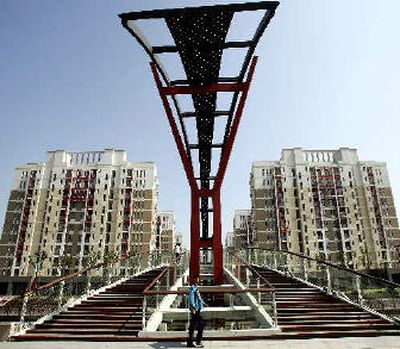China’s untamed tiger

CHANGSHA, Hunan — The projects sound innocuous enough: “Star Town,” “Dingji Mountain Villas,” “Rockefeller Center.” A massive new traffic police headquarters. Sunhere International Mall, floor space sufficient to cover 123 football fields.
But the flurry of construction in Changsha, a southern Chinese city astride a cocoa-colored river that until recently was far removed from the industrial bustle of affluent coastal areas, is typical of the building frenzy that has Beijing’s economic planners worried.
Banks, companies and local officials are pouring money into building luxury housing, shopping malls, showcase government buildings and factories, helping to push the rocketing Chinese economy to a better than 10 percent growth rate. More than two months after sounding the alarm about overheating, Beijing is having trouble slowing the pace.
“Chinese authorities are now scrambling to regain control over a runaway economy,” Morgan Stanley economist Stephen S. Roach wrote in a recent report. “China needs a more serious policy tightening.”
Construction projects like the forests of cranes on Changsha’s horizon are just the most visible evidence of a nationwide investment binge that raised new spending on construction and factory equipment to $318 billion by the end of May, up 30 percent over the same period of 2005.
Such investments are forecast to exceed $1.3 trillion this year, nearly half of China’s GDP.
To finance that spending, China’s big commercial banks, their already fat cash balances swollen by government bailouts and recent multibillion-dollar initial public offerings, issued new loans worth $267.5 billion in the first half of this year.
The worry is that too much of the money is going into redundant or ultimately unprofitable investments, risking a rebound in bad loans and possibly a financial crisis. With China now an engine in the global economy and international investors joining in on the Chinese investment binge, a hard landing could jolt world markets.
Apart from the risks in the real estate market, economists note surging manufacturing capacity in already glutted industries.
China’s auto industry has enough capacity to make 8 million units a year, far above the 5.7 million in sales in 2005. Supplies of about 70 percent of all consumer goods exceed demand, according to the Ministry of Commerce — factors that contributed to a tripling in China’s exports over the past five years.
Changsha, a city of 6 million, spent $300 million on construction in the first five months of this year, more than double the amount spent in the same period of 2005.
“Investment is overheating. There’s no doubt about that,” said Qu Hongbin, an economist for HSBC Corp. in Hong Kong. “It’s not only the scale but the quality or efficiency that we are worried about this time around.”
Warning that growth shows scant signs of subsiding from the 10.3 percent rate seen in January-May, the government is attempting once more to clamp down on excess investment.
In its latest wakeup call, China’s main planning agency issued a plea for more aggressive action to tighten credit and curb investment in real estate and factories, suggesting that the government levy a special tax on such spending.